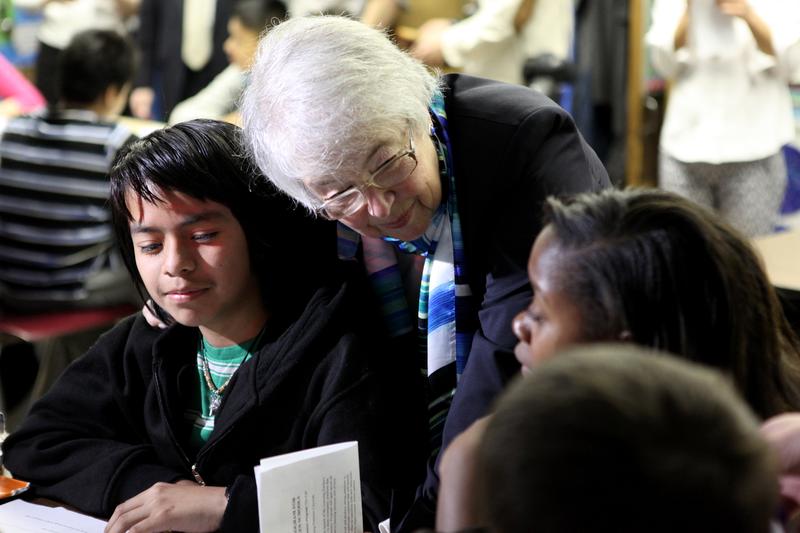
Walk into a middle school and it may feel like you’ve stepped into a foreign land, a world where young people are self-consumed, where a minor situation to an adult feels huge and devastating to a student trying to find her bearings at school and in the larger world.
Remember what it was like? Adapting to new ways of learning in subject-specific classrooms, feeling self-conscious about physical changes. Peers and friendships rose in importance. Parental relationships were tested.
It hasn’t changed much. As an educator and parent, I’ve come to see these years, in particular grade seven, as a watershed moment for youth development well deserving of our attention, best thinking and planning.
According to John Lounsbury, dean emeritus of the John H. Lounsbury School of Education at Georgia College and former editor of the Association for Middle Level Education, these are the most important years for the individual and, as an extension, for society.
“These are the years when youngsters crystallize their beliefs about themselves and firm up their self-concepts, their philosophies of life and their values – the things that are the ultimate determinants of behavior,” he wrote earlier this year.
This is why, as chancellor of the New York City Department of Education, I’ve focused on middle schools, and seventh grade in particular. It’s a key moment in which to inspire a life-long love of learning and study but to do this well, we must build environments that meet the needs of the whole child —academic, social and emotional.
While peers begin to take on larger than life roles for these tweens, so do key adults. We are essential guides to model healthy relationships. This requires flexibility on our part, a willingness to know when to be firm and when to give them more latitude.
This is also a time when we as adults make a fair share of mistakes. But that’s okay. We should let students know when we change our minds and shift to Plan B. It is a powerful statement for students to know we are all learning and growing together — and mistakes happen.
Most importantly, these growing adolescents want to be taken seriously by the adults in their lives. They want to be heard, and they want to follow their ideas and interests as they make sense of the world around them.
For adults this may feel risky or messy. Brain research tells us that the 12-year-old brain is still evolving; the ability to assess risks is not yet fully developed. How then can this child accurately predict the consequences of their actions?
In all honestly, they can’t. We should provide rich laboratories of learning where they safely test out their ideas, explore options and through their subjects come to see the connection between choices and consequences.
We can provide a safe haven for understanding their emotional sensibilities and teach ways to understand their thoughts and feelings — and keep a sense of humor in the process.
Our classrooms must be a place for the exciting dynamic students crave in middle school, where teachers intentionally tap into their interests and curiosity. We want to elevate their ability to ask questions and to engage in real-world opportunities, because this is how they come to know who they are and what matters to them.
As a seventh grader tutors a fifth grader in study skills or interviews a senior about New York City in the 1940s, these youth see that their actions and their studies matter. Middle schoolers, especially seventh graders, need additional outlets provided by robust athletic and arts programs—interwoven during school and seamlessly into after school hours—where creativity and collaboration are at the forefront, and every child can succeed.
Every day our educators are standing on the front lines with our children. Our job at the department is to support them with professional development, real-world learning opportunities, and mentoring — all the while assessing and demanding accountability.
These are exciting times. As we learn more from researchers about how young people think and develop, we will be ever more prepared to eagerly embrace those who, after all, are just being 12.
